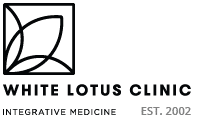Some of the less talked about but most common and impactful symptoms of perimenopause and menopause are those that impact vaginal and urinary health. In fact, up to 38% of women deal with some form of urogenital symptom after menopause including vaginal dryness, itchiness and pain, recurrent urinary tract infections, and urinary incontinence1. While symptoms such as hot flashes commonly resolve over months or sometimes years, vaginal and urinary symptoms frequently worsen with age2.
There is a form of vaginal estrogen therapy, estriol, that is extremely effective and safe for women dealing with vaginal dryness and other urogenital concerns.
What Causes Changes in Vaginal and Urinary Health in Perimenopause and Menopause?
The drop in circulating estrogen levels that occurs in these life stages can lead to changes in the health of the vaginal mucosa, the strength of the pelvic floor muscles and even changes in the vaginal microbiome. This can lead to new-onset or worsening of symptoms of vaginal dryness and pain with intercourse, urinary incontinence, recurrent urinary tract infections as well as other infections such as yeast.
The estrogen hormone plays an important role in keeping vaginal and urethral tissue healthy. Without the presence of estrogen, vaginal epithelial cells and the underlying tissue can thin2. Studies have found that restoring the vaginal cells with estrogen leads to an increase in vaginal compliance, increased blood flow to the tissue, improved lubrication and a decrease in vaginal pH2.
Estrogen receptors are also found within the bladder and urethra2. Research has found that topical estrogens increase the number of periurethral vessels present in postmenopausal women, likely the reasons why they improve urinary symptoms2.
Treating Vaginal Dryness with Topical Estriol
The estrogen hormone has 3 main forms in the female body. They are known as estradiol, estrone and estriol.
Estriol is the weakest of the three estrogens and has been found to significantly improve symptoms of vaginal dryness when applied directly to the vaginal tissue3. A systematic review published in the Obstetrics & Gynecology journal concluded that “All commercially available vaginal estrogens effectively relieve common vulvovaginal atrophy-related complaints…”3.
Another systematic review in The Journal of the North American Menopause Society concluded that vaginal estrogens were more effective for treating vaginal dryness than vaginal moisturizers and lubricants4. The study found that vaginal estrogens were effective in treating moderate and even severe cases4.
One study that used low-dose estriol gel as a treatment found that 93% of the study participants experienced an improvement in symptoms and 75% had a complete resolution of their signs and symptoms5.
Treating Urinary Symptoms with Topical Estriol
Research has also found that topical estriol can benefit urinary health in post-menopausal women.
Applying 1 mg of estriol has been found to improve stress incontinence when used along pelvic floor physiotherapy2. Topical estrogen therapy can also significantly reduce the frequency of urinary tract infections (UTIs), urinary urgency, and even reduce the frequency of night-time urinations6.
Safety of Vaginal Estriol
Research has consistently found that vaginally applied estriol is a safe therapy. Studies have found that topical estriol does not cause growth of the endometrium like oral estrogen therapy when applied at a low dose5.
A systematic review that looked at 22 studies including a total of 1217 women found that vaginally applied estriol did not significantly impact blood levels of estriol and concluded that vaginal estriol was safe for women who have contraindications to oral estrogen therapy7.
Ultra-low dose vaginal estriol has even been studied in women with early breast cancer who are dealing with vaginal health concerns8. This study found that the estriol treatment was both effective and didn’t significantly impact blood levels of estriol in these women8. It concluded that vaginal estriol therapy was a safe and effective option for women who were being treated with non-steroidal aromatase inhibitor therapy for breast cancer8.
Next steps
If you’re struggling with vaginal dryness and pain, recurrent UTIs, or urinary incontinence in the perimenopausal or postmenopausal stages of life, talk to your practitioner about the best options for you!
Vaginal estriol can be prescribed when indicated by naturopathic doctors who hold a prescribing license. If you prefer to use non-hormonal treatment options, your naturopath also has other options that can reduce symptoms.
References
- Ballagh, S., 2005. Vaginal Hormone Therapy for Urogenital and Menopausal Symptoms. Seminars in Reproductive Medicine, [online] 23(02), pp.126-140. Available at: <https://www.thieme-connect.com/products/ejournals/abstract/10.1055/s-2005-869480>.
- Krause, M., Wheeler, T., Snyder, T. and Richter, H., 2009. Local Effects of Vaginally Administered Estrogen Therapy. Journal of Pelvic Medicine and Surgery, [online] 15(3), pp.105-114. Available at: <https://www.ncbi.nlm.nih.gov/pmc/articles/PMC3252029/>.
- Steele, N., Ledbetter, C. and Bernier, F., 2016. Genitourinary Syndrome Of Menopause and Vaginal Estrogen Use. Urologic Nursing, [online] 36(2), p.59. Available at: <https://journals.lww.com/greenjournal/Abstract/2014/12000/Vaginal_Estrogen_for_Genitourinary_Syndrome_of.12.aspx>.
- Biehl, C., Plotsker, O. and Mirkin, S., 2019. A systematic review of the efficacy and safety of vaginal estrogen products for the treatment of genitourinary syndrome of menopause. Menopause, [online] 26(4), pp.431-453. Available at: <https://journals.lww.com/menopausejournal/Abstract/2019/04000/A_systematic_review_of_the_efficacy_and_safety_of.17.aspx>.
- Villa, P., Tagliaferri, V., Amar, I., Cipolla, C., Ingravalle, F., Scambia, G., Ricciardi, W. and Lanzone, A., 2019. Local ultra-low-dose estriol gel treatment of vulvo-vaginal atrophy: efficacy and safety of long-term treatment. Gynecological Endocrinology, [online] 36(6), pp.535-539. Available at: <https://www.tandfonline.com/doi/full/10.1080/09513590.2019.1702016>.
- Rahn, D., Carberry, C., Sanses, T., Mamik, M., Ward, R., Meriwether, K., Olivera, C., Abed, H., Balk, E. and Murphy, M., 2014. Vaginal Estrogen for Genitourinary Syndrome of Menopause. Obstetrics & Gynecology, [online] 124(6), pp.1147-1156. Available at: <https://journals.lww.com/greenjournal/Abstract/2014/12000/Vaginal_Estrogen_for_Genitourinary_Syndrome_of.12.aspx>.
- Rueda, C., Osorio, A., Avellaneda, A., Pinzón, C. and Restrepo, O., 2017. The efficacy and safety of estriol to treat vulvovaginal atrophy in postmenopausal women: a systematic literature review. Climacteric, [online] 20(4), pp.321-330. Available at: <https://www.tandfonline.com/doi/full/10.1080/13697137.2017.1329291?scroll=top&needAccess=true>.
- Hirschberg, A., Sánchez-Rovira, P., Presa-Lorite, J., Campos-Delgado, M., Gil-Gil, M., Lidbrink, E., Suárez-Almarza, J. and Nieto-Magro, C., 2020. Efficacy and safety of ultra-low dose 0.005% estriol vaginal gel for the treatment of vulvovaginal atrophy in postmenopausal women with early breast cancer treated with nonsteroidal aromatase inhibitors: a phase II, randomized, double-blind, placebo-controlled trial. Menopause, [online] 27(5), pp.526-534. Available at: <https://journals.lww.com/menopausejournal/Fulltext/2020/05000/Efficacy_and_safety_of_ultra_low_dose_0_005_.7.aspx>.





